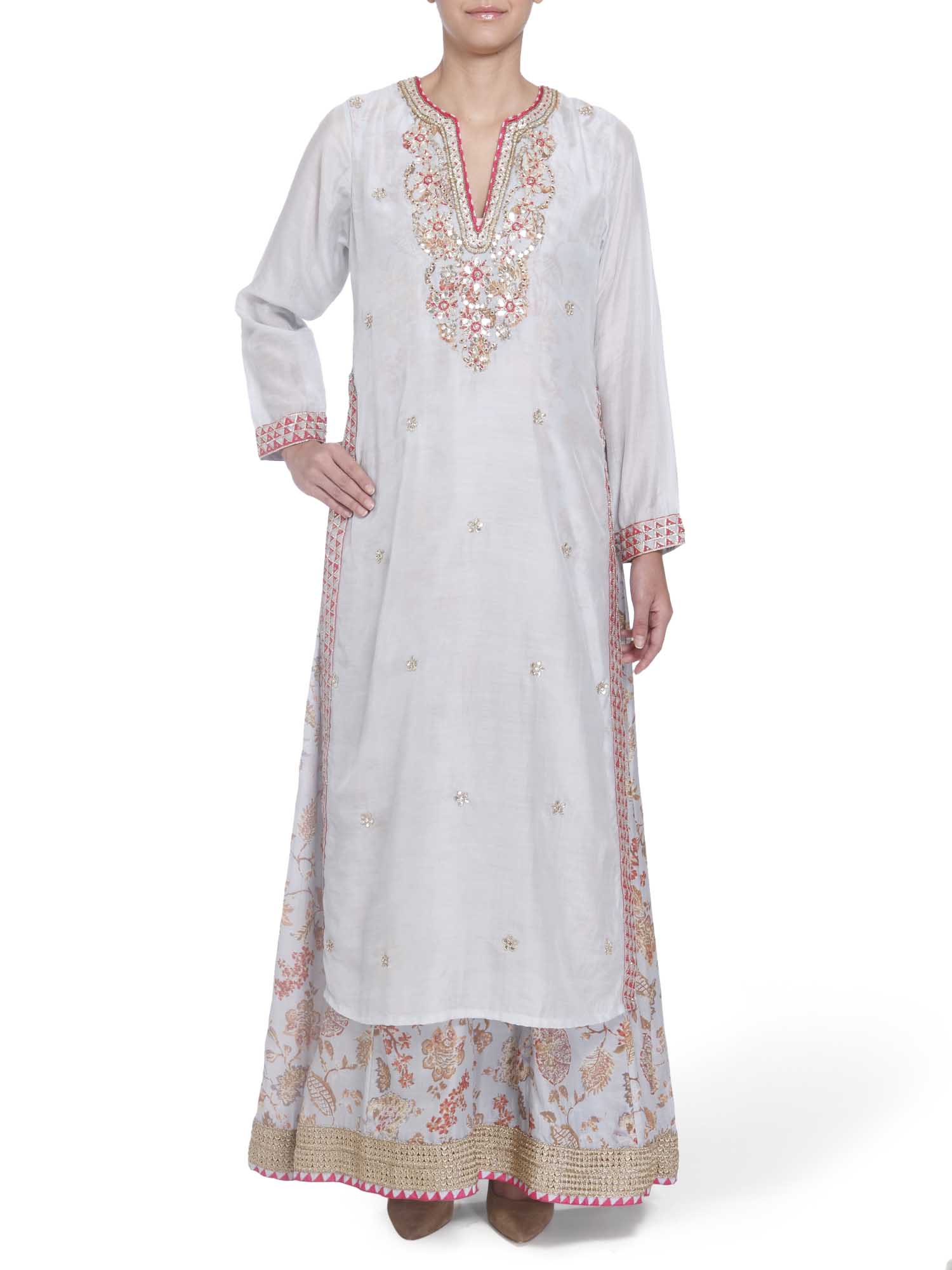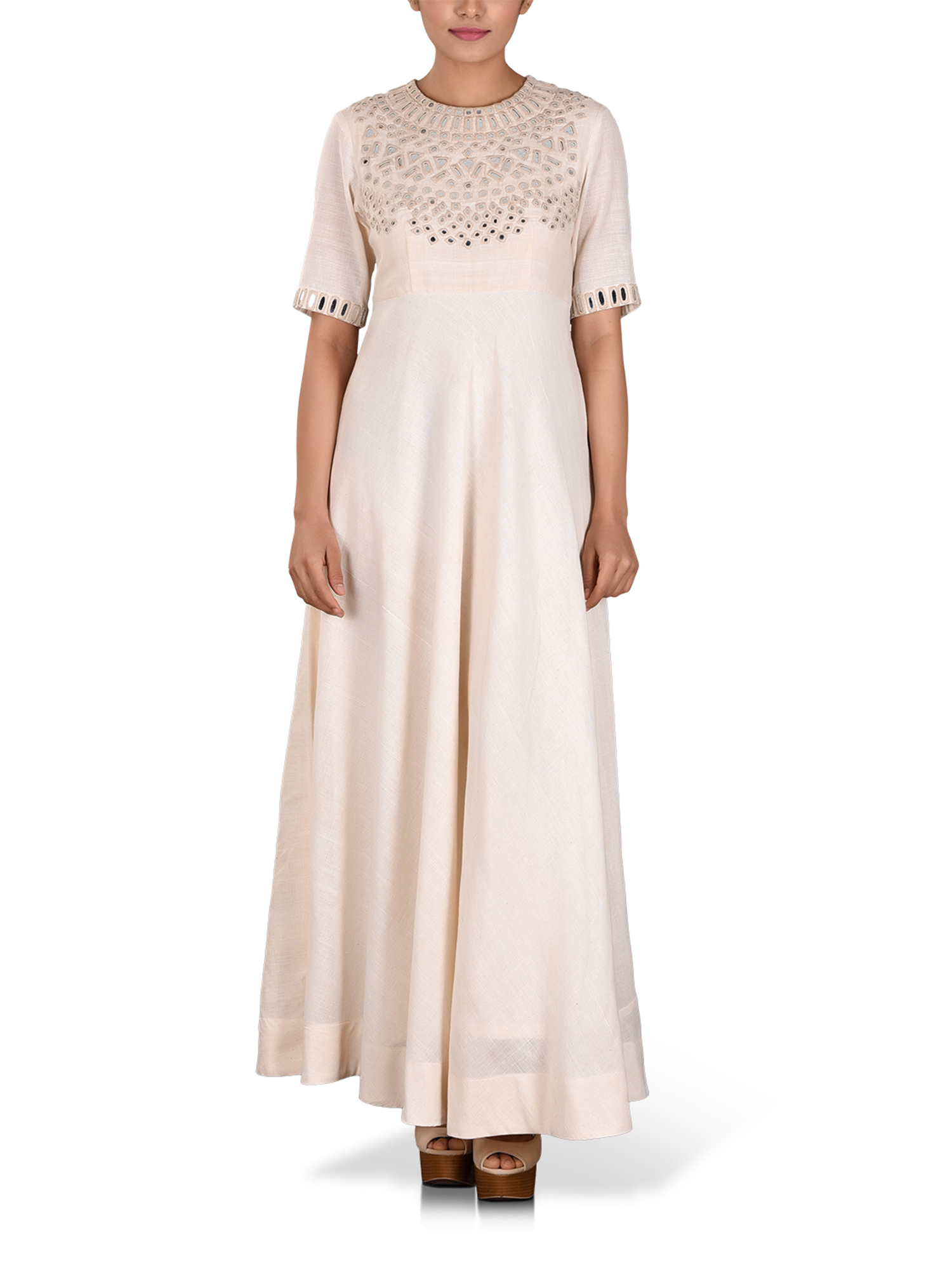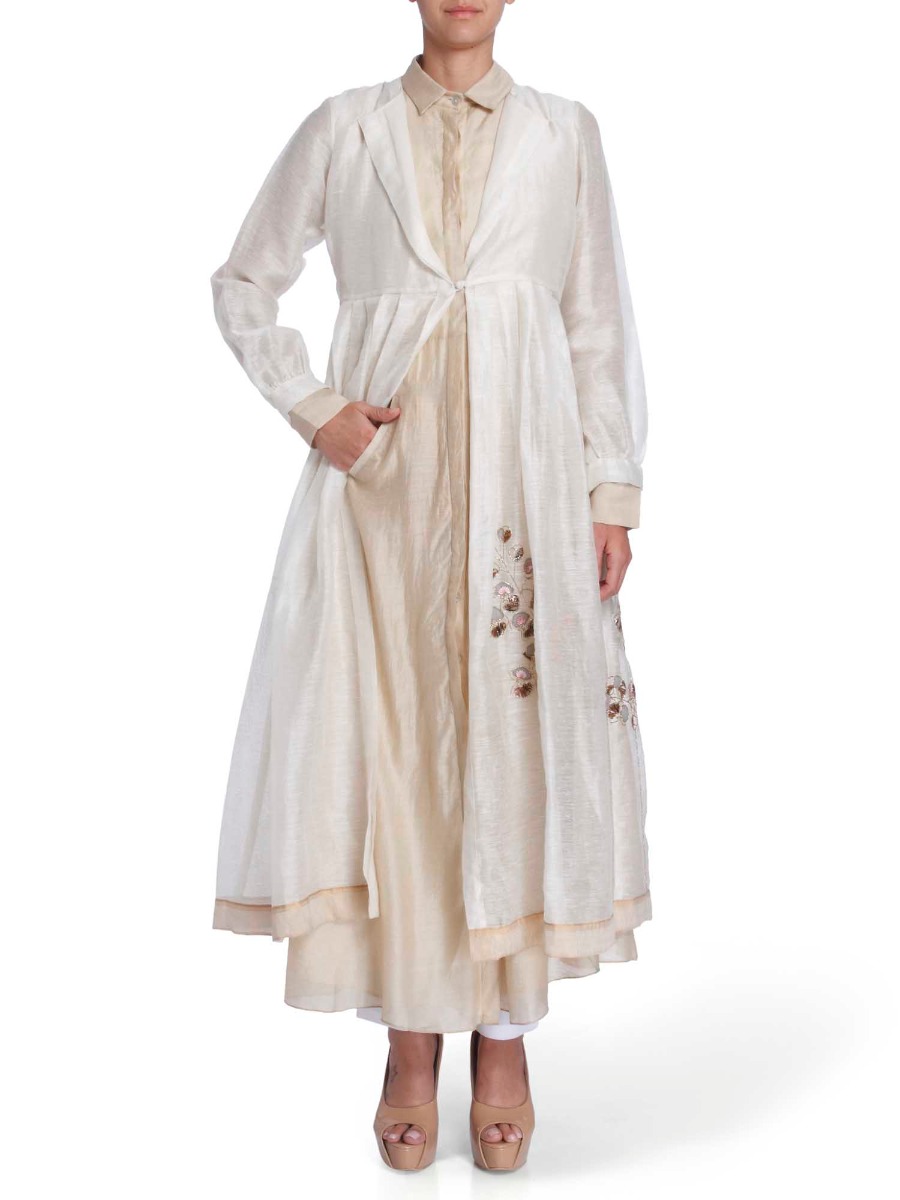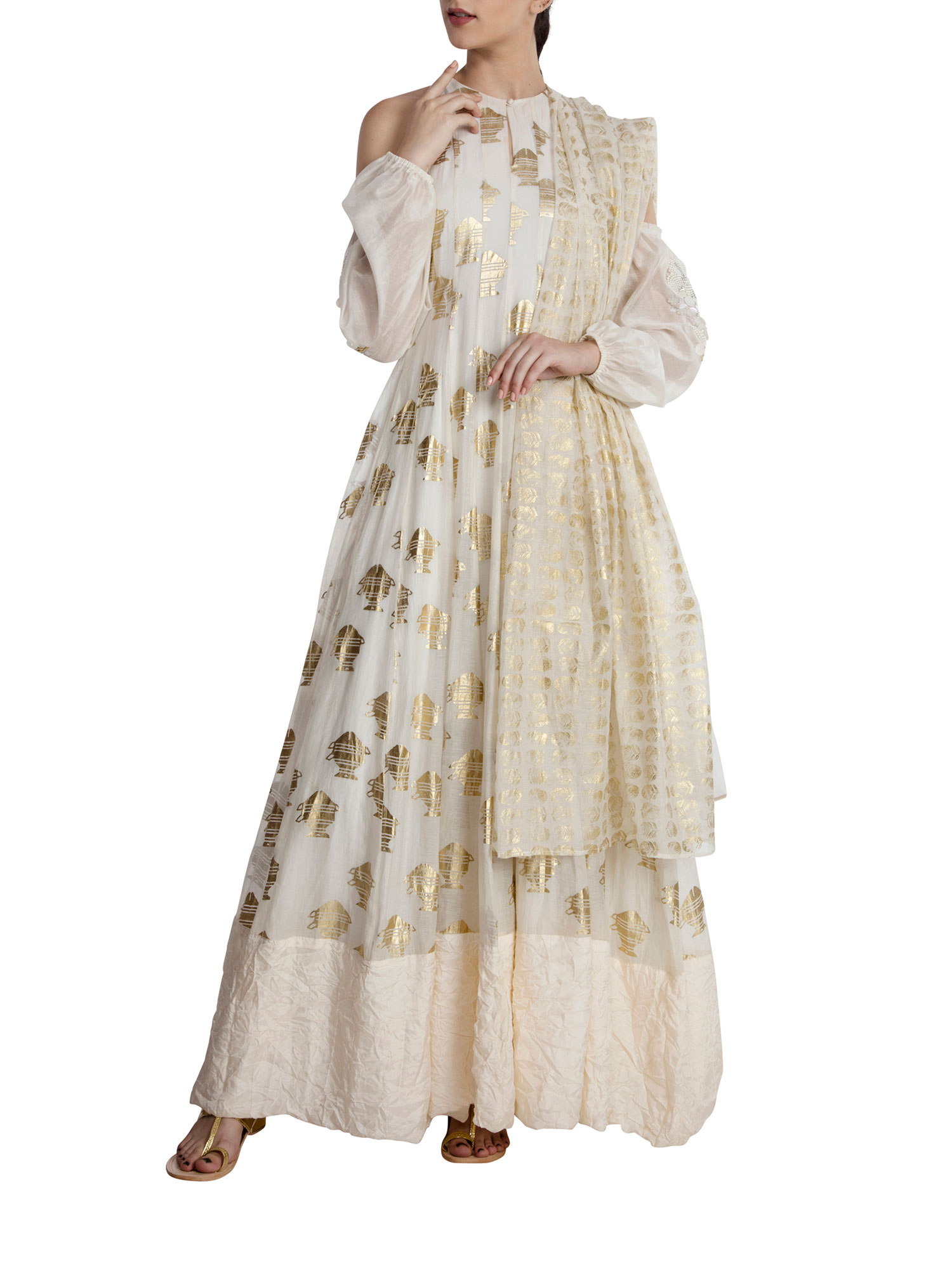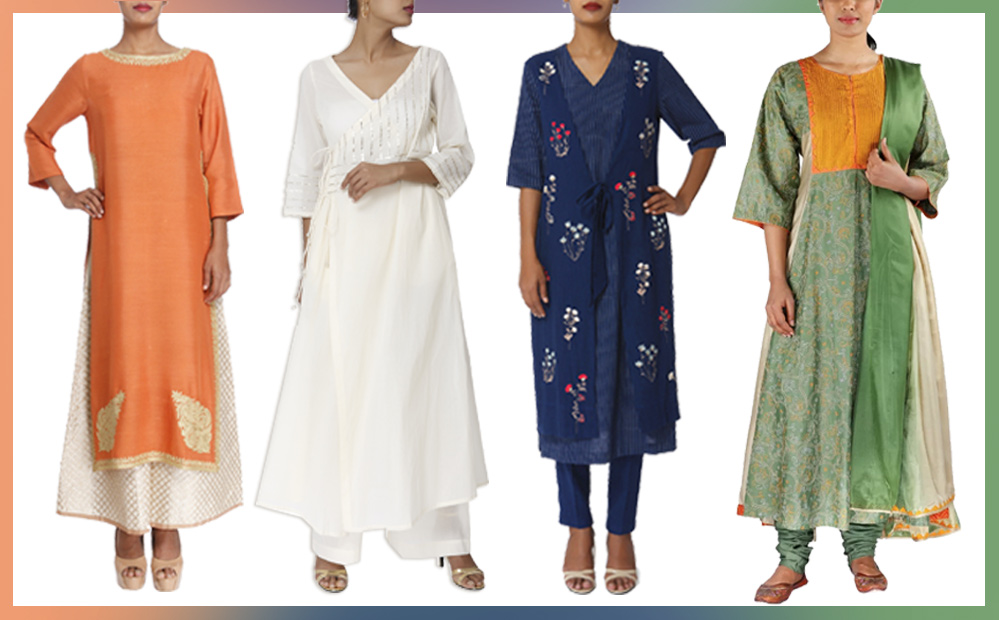
Until it’s brought to our notice, little do we realize how artistically replete our motherland is, whether it is the craft of intricate embroideries that require hours of honing or the dexterity of painstakingly handweaving fabrics –passed on from generation to generation. It is now our duty to treasure this legacy and ensure that it never ceases to be! So, this Independence Day let’s pay homage to the rich sartorial heritage of India!
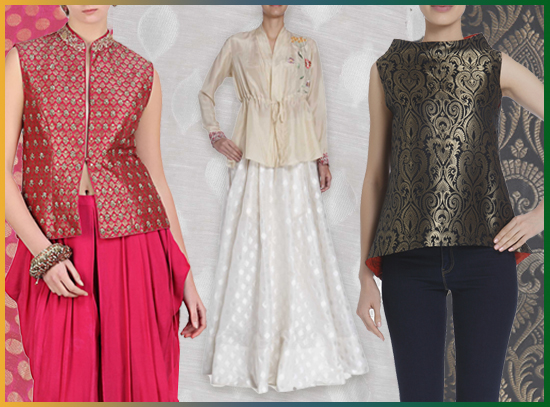
Brocade
While this luxe fabric originated in China, it instantly became a popular staple for the Indian royalty. Typically woven in silk with gold or silver threads, it gives the effect of embossed motifs on a fabric. Due to its intricacy and sheer beauty, brocade is highly coveted for crafting opulent pieces- loved by couturiers and style connoisseurs alike.
Chanderi
Silk and zari threads are handwoven together in the traditional cotton yarn producing this exquisite ethnic fabric that finds its reference in the Vedas, stating- Lord Krishna’s cousin Shishupal founded it. Sheer texture and unique buttis (motifs) inspired by nature are the essence of this primarily handloom fabric which has made a remarkable journey from sarees to modern ethnic outfits.
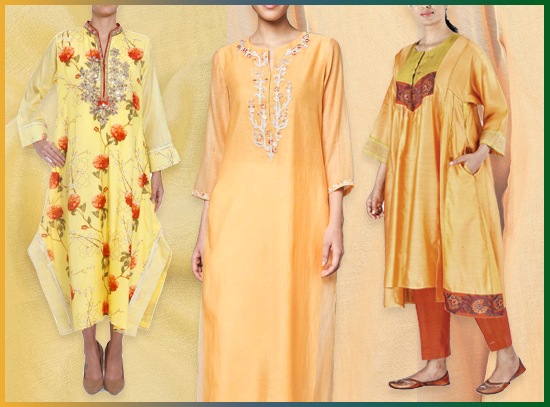
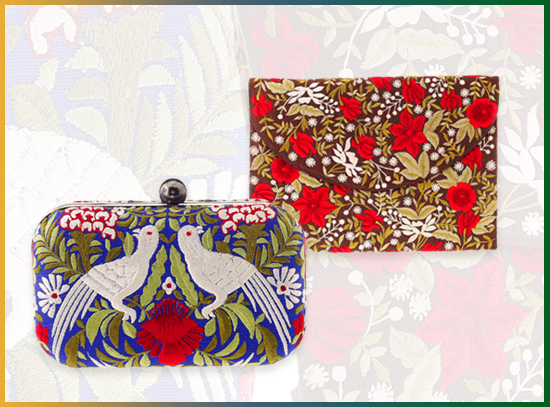
Gara
The chronicle of the gara embroidery is an old one. On migrating to India, the Parsis brought with them, this pristine craft- a needlepoint technique used to embroider Parsi and Indian motifs with pastel threads on bright silk fabric- making them compelling heirloom pieces to be treasured.
Aari
Dating back to the Mughal Empire in India, aari work is one of the finest embroideries there is. This work demands tedious needlework using zari or resham (silk) threads resulting in surreal patterns that are simply a treat to the eyes. While the thread remains the focus of this embroidery, oftentimes beads and sequins may also be used for beautification.
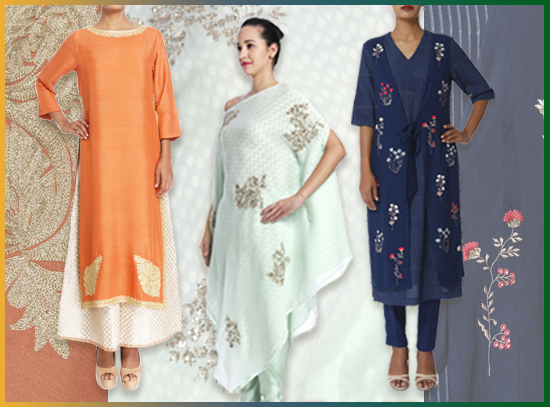
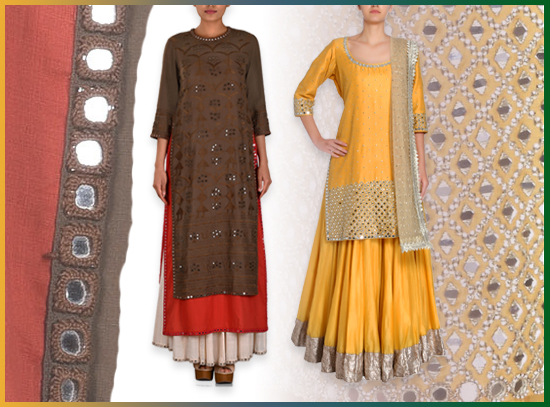
Sheesha work
This literally kaleidoscopic work involves attaching mirrors of geometric shapes to the fabric using vibrant embroidery. Adored and adorned in 17 th century Iran to present day Gujarat, Rajasthan and Haryana, this art form still stays relevant with modern-day fusion wear.
Gota Patti
Also known as gota work, this Indian embroidery originated in Rajasthan, essentially uses gold or silver lace called gota. Native to Lucknow, artisans weave pure gold or silver threads with satin or twill to create these laces. Appliquéd in myriad motifs on cotton and silk fabrics, this work brings resplendence to ethnic outfits.
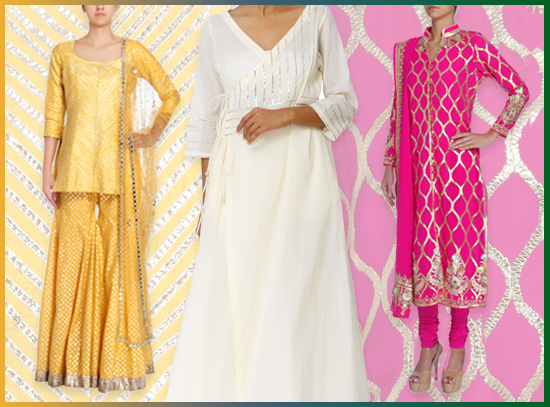
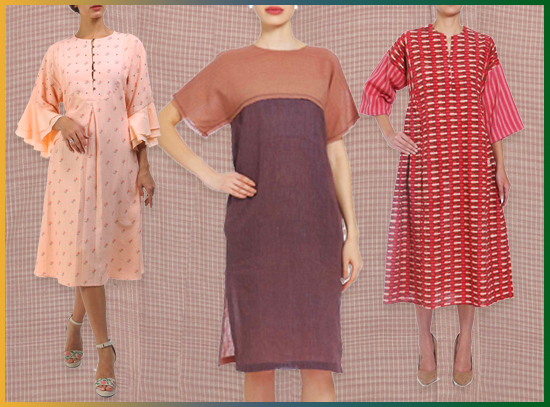
Khadi
Contributing largely in our nation’s freedom struggle, this natural handwoven fabric is quintessentially Indian. This nifty fabric keeps one cool in the summers and warm in winters, all while creating sophisticated ensembles. Spun and woven on handloom, it is a burgeoning craft principally empowering the small-scale weavers of our country.
Cashmere
An exclusive wool obtained from the cashmere goats residing in the hills of Kashmir, it is later handwoven seamlessly into shawls and stoles that are so fine that they can effortlessly pass through a finger-ring. A luxe fabric, it is softer and more insulating than a sheep’s wool even so. The world-famous pashminas also form a part of the cashmere conglomerate.
Janavi India-
Poodle scarf- ₹9,000
Sheep scarf- ₹9,000
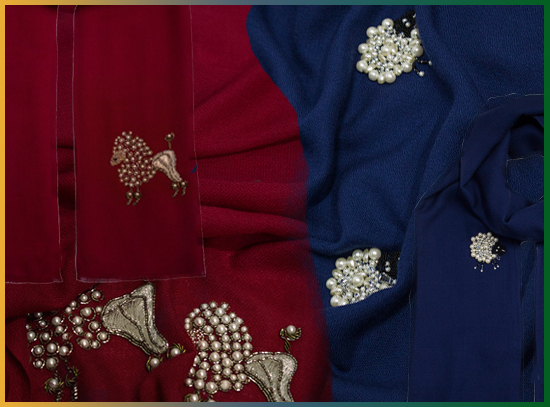
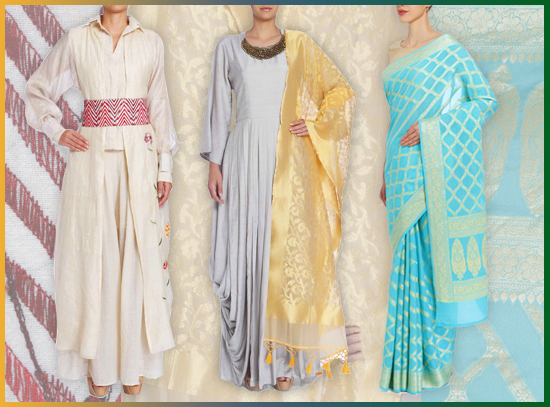
Banarasi Weave
Hailing from the holy city of Varanasi, Uttar Pradesh, this trademark weave garners mentions in ancient scriptures of Buddhism and Mahabharata. Carefully woven gold and silver threads with pure fabrics to create motifs that each have a personality forms the fulcrum of the banarasi weave. With a minimum of three artisans required to work on one nine-yard saree, the banarasi weave is a riot of imperial motifs, colours and textures. An Indian bride’s trousseau is never complete without one-such is its allure!
Follow @NykaaFashion on Instagram for more!


